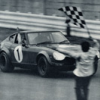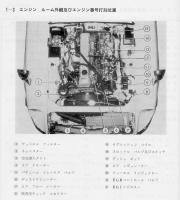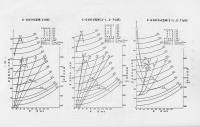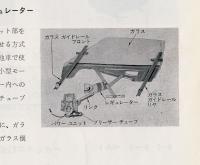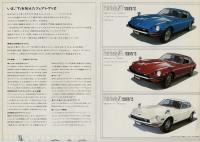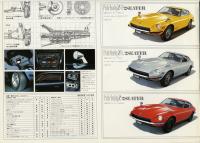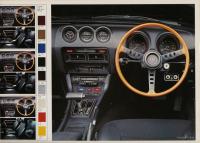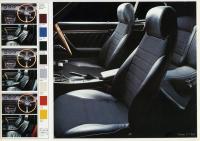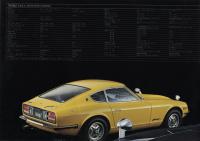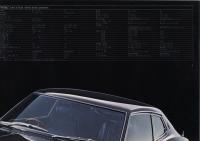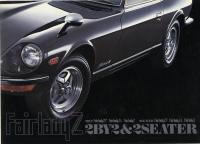Everything posted by HS30-H
-
Datsun-240z Vs Fairlady-z432
Hi Kats, I'm not too bad, thank you. Quite busy with work at this time of year..... Don't know when I'll be in Japan next. Three times already this year. I don't like the extreme heat all that much ( it was even too hot for me in Hokkaido last month ), or the bad exchange rate...! Cheers, Alan T.
-
Datsun-240z Vs Fairlady-z432
Hi Kats, It was the Portuguese market that had the very cool spec HLS30s, with factory headlamp covers and the '432' Kobe Seiko wheels as standard equipment. The franchise holder ( Entreposto ) had good ties with Nissan, and were able to negotiate a very nice combination of parts for their market version. I believe Thorsten's 240Z was a recent import from the USA. It's not an original German market car. Cheers, Alan T.
-
RH Series 1 Owners??
Japanese market got the option of L24-engined S30-series Zs from October '71 through to the end of 1973, with the Fairlady 240Z, Fairlady 240Z-L and Fairlady 240ZG models. I have two of them here in the UK. Early RHD 'Export' model Datsun 240Zs were sent to UK, Australia, New Zealand, South Africa and a few other territories too. Not just "England". OP didn't specifically state that he wanted an L24-engined model, which might be the proof of the pudding in 26th-Z's post urging him to look a little deeper into the subject of RHD variants. It's good advice, as it's a quite complicated subject. OP might also be well advised to take care in applying the north American / USA vernacular of 'Series 1' etc to RHD models, as it doesn't really apply. We've discussed this here on the forum in the past. RickQ, I wish you luck! Hope you find a good early RHD car that you can be proud of. Alan T.
-
Well, I wound up with another low VIN Z...
Mike, I think these are - as you might already have imagined - panel finishing instructions from some kind of quality controller. I think they are notes from one worker to another indicating what needs to be done to improve the appearance, fit and finish of the panels. They are really difficult to read, let alone translate! A combination of very casual writing style ( it might be a bit rude to call it poor writing skill ) plus the fact that these guys quite probably only needed to the most basic of notes to know what was meant, and the fact that some of what was written is half missing ( as in your photo no.024 ) all adds up to a real challenge. I'm sorry I'm not able to do better. I think the note in your photo no.015 reads: "Naka CW shi age", and my approximate reading of that is "Middle CW (re?)finish". I don't know what 'CW' refers to, but it might be indicating an area of the panel concerned, and I am imagining that my translation of 'shi age' ( a verb ) refers to something that is yet to be done. I think it points to something that needs to be improved, or fettled.. The writing seen in your photos nos.023 & 027 I think reads as "Ue ba-ri narashi", although there is also something written to the left and underneath that ( also I think starting in "Ue" - meaning 'up', 'upper' or 'top' ) that I can't make out. I think this means: "Upper / top 'ba-ri' smoothen ( out )". Does that make sense? I don't know what 'ba-ri' refers to ( possibly a seam, joint, fold or other detail of the body section concerned, and the guys in the body finishing section would have known what it meant ) but I think the upper part of it needed to be smoothed / levelled / flattened out, according to the person who wrote the note. That's my guess anyway. With this car being such early production, I can imagine that the presses hadn't had much tweaking yet, and the guys assembling the sections of the body were still learning on the job. Perhaps these same guys were finding new / better ways to accomplish their tasks as they went along ( witness the roof joints and hatch opening on this car, which later bodies don't show ) and these graffitoes were linked to those processes, or a consequence of them? This kind of thing is bound to be quite cryptic to us looking in from outside. Sorry I can't be of more help. Perhaps Kats, Golgo13, Esprit or any other native Japanese speakers can correct me, or give their thoughts? Body looks in absolutely A-M-A-Z-I-N-G condition, by the way. I'm very envious! Cheers, Alan T.
-
DHM-8/7/2010 presents Yosihiko Matsuo -Chief of Design of the 240Z
Moonpup, you don't seem to have any sense of fun whatsoever. Where's this "Laidback Purist" you claim to be? I'm sure Carl can handle a little leg-pulling sometimes, and I'm sure he finds it an occasional relief from the usual fawning. It's good healthy fun, even if you don't know some of the backstory that prompts it. And anyway, when are you going to finally pluck up the courage to ask me out on a date? :kiss: Alan T.
-
Datsuns at Bonneville
Great pictures and data, Mike. I've seen pics of that car in a few publications, but never in such detail. Thanks for posting them. Yes, they are the Ikeda Bussan-manufactured seats as seen in the 432R and in factory works circuit race and rally cars. They are simple ( thin! ) FRP shells with thin foam padding and 'office furniture' grey hopsack wool blend cloth covers. Ikeda Bussan was an office seating manufacturer... Furthermore, the car has a very rare 'Mach' brand Nissan Sports Option steering wheel, as far as I can see. It looks like the version nicknamed the "Ura Mach", as the 'Mach' engraving was on the rear of the centre spoke rather than on the front, as in some of the other models. The leather has dried out, so it has turned a funny colour. Originals change hands for quite serious money in Japan these days, and replicas are now being reproduced. Great to see an original on the car. I was lucky enough to get an original myself a couple of years ago. Looks like somebody liberated the gearknob.... Those will be 'Koito' brand headlamps. The Z-Std / early HLS30U clear glass is interesting. I can't think of any performance advantage to be gained there, so maybe it's a clue to the origins of the car and/or some of the parts on it? Fascinating! Cheers, Alan T.
-
DHM-8/7/2010 presents Yosihiko Matsuo -Chief of Design of the 240Z
Carl, Really? Wow. I'm amazed that Nostalgic Hero magazine seemingly needed you to 'hook them up' with Matsuo san. They know Matsuo very well, and have interviewed him many times in the past. That's like selling snow to Eskimos. Or perhaps you mean USA-based Shin Yoshikawa, who now has a regular column in Nos Hero? I'm sorry, but knowing Matsuo san it's hard to imagine any situation where you were in charge of his time. You make it sound like you are his management Alan T.
-
HLS30-OOO13 Has Been Found!
Over on the CTZCC.com forum, Frank T has made a post referring to this thread. Seems he thinks that some apologies are in order. As this classiczcars.com thread was made in reference to that Connecticut Z Car Club forum thread, it's all a little complicated. But here's the new post by Frank T, quoted verbatim: This particularly caught my attention: I'm wondering just what it is exactly that Frank T. thinks should be retracted, corrected or apologised for? Seems to me that just about every comment on the inaccuracies in the ctzcc.com forum thread was justified. If anything needed correction it was the ctzcc.com thread, and indeed some of the mistakes, inaccuracies and misattributions as originally posted have now been corrected ( although not all of them.... ), which would appear to justify them being brought to attention in the first place. A few of the follow-up posts caught my attention too. Here's part of one from John Taddonio: Now, please excuse me if I have the wrong end of the stick here, but did John Taddonio actually make any posts in this thread? What's his username here at classiczcars.com? Is he actually mistakenly referring to classiczcars.com when he means the zcar.com forum...? If there are any "self-proclaimed experts" here it would be fun to know who they are, and if they really are "...the most rude, obnoxious and opinionated louts..." he has ever seen. So John T - if you are a member here - please tell us whom it is exactly that you are referring to? Thanks, Alan T.
-
DHM-8/7/2010 presents Yosihiko Matsuo -Chief of Design of the 240Z
Carl, I don't think you mean 'Nostalgic Hero' ( the Japanese magazine ). I think you must - Shirley - mean 'Japanese Nostalgic Car' magazine / website? http://japanesenostalgiccar.com/
-
DHM-8/7/2010 presents Yosihiko Matsuo -Chief of Design of the 240Z
Polite correction: Matsuo san's given name is usually spelled "Yoshihiko". Regards, Alan T.
-
Datsun comp parts will be going for sale
Joce, Judging by what I see from the photos, those Ampco struts have been modified. That's not what the normal factory adjustable platforms look like. Factory adjustable platforms are unmistakable. They have a very short threaded section with a wide pitch thread, and two fat aluminium adjusters. Yours appear to have a longer threaded section with a finer pitch thread, and a collar of some sort at the bottom. Possibly modified by a previous owner to give more height adjustment range, or to replace damaged threads? Springs look a little longer than my original Sports Option items too. Earliest ones were black, later ones blue. Yours possibly replaced with longer ones to suit the ( possibly? ) replaced adj. platforms? Are the part numbers on the springs? Don't know if that helps at all....... Good luck, Alan T.
-
Naming the g-nose
Just a thought - but did he mention Versions D, E and F.....? Seven shots at getting it 'right' is a fairly low batting average, isn't it? As far as I've been told, the 240ZG was given the 'G' suffix in it's name as a reference to its so-called "Grande" nose. You can see this spelled both "Grande" and "Grand" in Nissan documentation, but it was also called the "Aerodyna" nose ( short for 'Aerodynamic" of course ) in official docs. I've never heard any stories that it was actually a 'Version G', and that story seems a little bit too convenient to me. If a 'Version F' had been decided as the final version, would they have had to come up with a nickname starting with the letter F...? In any case, Matsuo san wouldn't have been the one tasked with naming the product. That wasn't his remit. Do you think it's possible that a little something in the story got Lost In Translation? Matsuo would of course talk about versions by giving them letters ( A,B,C,X,Y,Z or whatever ) and/or numbers ( logically staring with 1 ) as they would probably have done this at Nissan too. There could have easily been a Version A, B and C of what was to be called the 'Grande' nose - so both could be correct. I'm up in Hokkaido on holiday at the moment, and will be stopping over in Tokyo for a few days on the way back. If Matsuo san is home by then, I might ask him to clarify. If he's recovered from his trip, that is..... :classic: Alan T.
-
'Big Sam' - Bonhams auction at 2010 Silverstone Classic.
Here's the result from the Bonham's auction at the Silverstone Classic meeting on 24th July: Lot No. 119 - 'Big Sam' - reached a Hammer Price of £70,000 - so with the Buyers Premium and taxes, the new owner will have paid a total of £79,987.50 ( that's the equivalent of around $122,750 US at today's exchange rate ). Not bad. Hopefully the car will see the track again soon.... Alan T.
-
Drug this home today
Going by the relatively high engine number of that L20 block, I wouldn't rule out the possibility that the whole engine could be from a later model - very likely a Japanese market S130-series Fairlady Z. That would explain some of the "ZX-like" parts seen on it. I can understand why people might point at what they call "280ZX" parts and details on such a car, but the "ZX" variants were Export models, and this car would have spent the first years of its life in its home market of Japan. Japan had the non-'X' S130-series Fairlady Z, Fairlady Z-L, Fairlady Z-T, Fairlady 280Z, Fairlady 280Z-L, Fairlady 280Z-T and their '2/2' variants ( I've listed them up on this forum in the past ) and one of the 2-litre models could have donated an engine ( and steering wheel! ) to this car whilst it was still in Japan. I agree. Many of these Japanese home market cars that turn up 'out of market' are what I call "G.I. Brides". Two of my own cars here in the UK were originally imported by USAF personnel who had been posted to Japanese bases and then posted to UK bases on their 'rotation' tours of duty. They bought the cars in Japan, used them there ( RHD in an RHD country ) and then had them transported - gratis - to the UK as part of their allowance, and used them here ( again, RHD in an RHD country ). Some of these personnel were posted on 'exchange' with Royal Air Force personnel before finally going home to the USA, like the first owner of my 1970 Fairlady Z-L - Sergeant W.P. Comstock. Wonder if he's still around? I know of at least 15 Japanese market cars which arrived here in the UK as such 'G.I. Brides'. On returning to the USA, their owners sold them here. I have been told that it was an accepted practice which helped to give them a little extra 'pocket money' on returning home. Makes sense. More to do with the national speed limit in Japan than the capabilities of the car, I think. Not that the car couldn't manage 180km/h, or that there was nowhere in Japan to do it ( there was ), but more that you had no business to be doing 180km/h or more on public roads in Japan at the time...! Alan T.
-
Drug this home today
Yes, this car would originally have had a 180km/h speedometer. I would guess that this was swapped out when the car went to the USA. You can see what the km/h speedo looked like if you blow up the brochure shot of the dash from my first post.
-
1969 Fairlady Z Japanese newspaper advertisement
Kats, Ah yes, I think I must have been remembering the Club S30 discussion. I knew you'd pointed something like this out before. Japanese press / marketing division of Nissan must have got their hands on some very early cars! Cheers, Alan T.
-
Drug this home today
Good points. In fact, when a car like this ends up 'out of market' it is not all that surprising that it starts moving away from its factory specification. Oftentimes this will be due to a make-do-and-mend scenario, or just lack of data. As I mentioned in a previous post, the 1976-on S31 model range had to comply with a new set of Japanese emissions and safety standards. The engines used NAPS ( Nissan Anti Pollution System ) along with TCS ( Transmission Controlled Spark ) on the manual trans, and there were some updates for 1977 & 1978 for which I don't have data to hand. I'm certainly no expert on the later injected Nissan L-series engines, so I'm afraid I can't tell you what's different between the market models. This particular car - as evidenced by the extra bells and whistles such as the electric windows, remote control mirrors and the eyeball interior lamp - appears to be a Z-L or Z-T model ( not the plain vanilla 'Z' standard model ) and therefore would have had a 4.375:1 diff ratio. With an 8.6:1 compression ratio peak power was 130ps at 6,000rpm and peak torque was 17kg-m at 4,400 rpm. It would have felt reasonably lively for the period. Perhaps not quite the slug you might expect, and the 2 litre engines always like to rev and should be fairly smooth. Here's a scan of a factory engine bay pic ( note that this is the 1976 at-launch spec, so a 1977 build car may have moved on from this ) and some graphs illustrating gearing and power etc: Alan T.
-
1969 Fairlady Z Japanese newspaper advertisement
Yes. Now you mention it, it does seem a little far back from the edge. And you're making me think that the bulge on the bonnet is shorter than normal too...! What do you think, Kats? Very early ( pre production ) car? Do I vaguely remember you pointing this out before?
-
Drug this home today
Carl, Yes, looking again at the photo I can see what appears to be the factory electric window switch present on the door ( but no door panel - which would have been special for the elec window version ). I think I should have all the parts manual references / wiring diagrams etc etc for these, if anyone needs them? Cheers, Alan T.
-
1969 Fairlady Z Japanese newspaper advertisement
I can't see anything unusual. I think it's a 432 because I think I see the mag wheel centre caps sticking out. Come on, what have you spotted Kats?
-
Drug this home today
Arnie, A 'GS31' prefix indicates a '2/2' variant Fairlady Z, Fairlady Z-L or Fairlady Z-T model made after the big update to Japanese safety and emissions standards in 1976. The 'S31' prefix indicated the compliance to the new standards, but it was still technically part of the S30 series. Body serial number 010623 on a GS31 prefix would imply 1977 build year, and likely June to August build months ( you can cross-reference parts on the car for a more accurate build date ). Engine would have been an L20 six with Nissan EGI injection, and NAPS ( Nissan Anto Pollution System ). Transmissions on these would have been either 4-speed manual, 5-speed manual or Auto, depending on model and/or chosen options. Lots of interesting little doo-dads on these cars: Higher-specced models had electric windows, remote-adjust mirrors and 'eyeball' interior lamps etc. If you plan the part out the car, you might get some interest from the HybridZ crowd as a parts donor for LHD to RHD conversion? Oh, and I think the handbrake / emergency brake needs adjustment...! Here are some S31 sales catalogue scans that you might find of interest: Cheers, Alan T.
-
Datsunland Museum article
Aaaargh! It's all true....! Seriously though, there's more wrong than there is right in that article. I was completely astounded at the story of the loading ramps for the transport ships. It only takes a moment of thought to understand that a 'normal' freighter ship couldn't be converted to a makeshift 'Ro-Ro' car transporter just by adding a ramp to it. The whole structure of the ship needs to be dedicated to driving cars on and off, and that's why purpose-built car transporter ships were added to the fleet when increasing Export volume made it a necessity. Somewhere deep inside each of these stories is a tiny seed of truth that has been exaggerated, misunderstood and repeated many times with extra embellishments over the years. They have grown up with very little resemblance to the simple, and sometimes rather bland, truths that they were based on, and some of the characters involved in the stories have started to believe them themselves. We - the gardeners - really ought to be pruning back some of these stories, and doing a little weeding. Alan T.
-
1969 Fairlady Z Japanese newspaper advertisement
Chris, The first ad ( 20th October ) was a Z432, the second ad ( 2nd November ) was a Z-L and the third ad ( 20th December ) is hard to see from the angle, but I suspect is a Z432 again. These cars - and the cool westerner with the pipe! - were used on the ( colour ) ad campaigns used in magazines too. They would, I think, have been very low serial number cars. No idea of numbers though....! Alan T.
-
1969 Fairlady Z Japanese newspaper advertisement
Mike, Just to clarify - This was a series of ads, with different release dates. The first was used from 20th October 1969, the second from 2nd November 1969 and the third from 20th December 1969. The dates can actually be read from the tops of the newspaper pages too ( the '44' means Showa 44, ie 1969 ). Any scans of the original newspaper pages will naturally be quite poor quality, which is just the nature of newsprint I'm afraid. Here's the third ad in the sequence:
-
BRE Spoilers and Spooks are back
Thanks Ron, BRE should have you on their payroll..... Cheers, Alan T.




